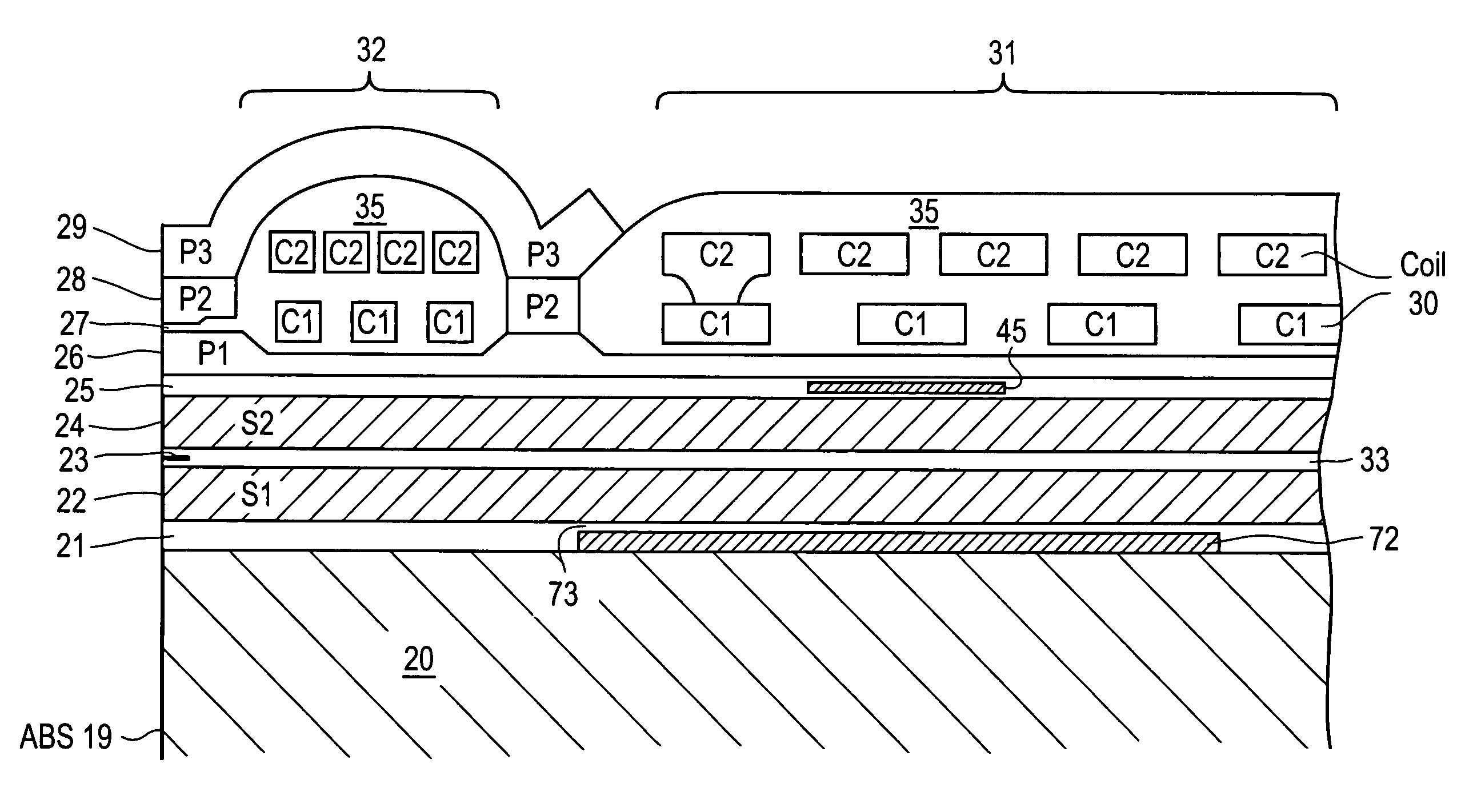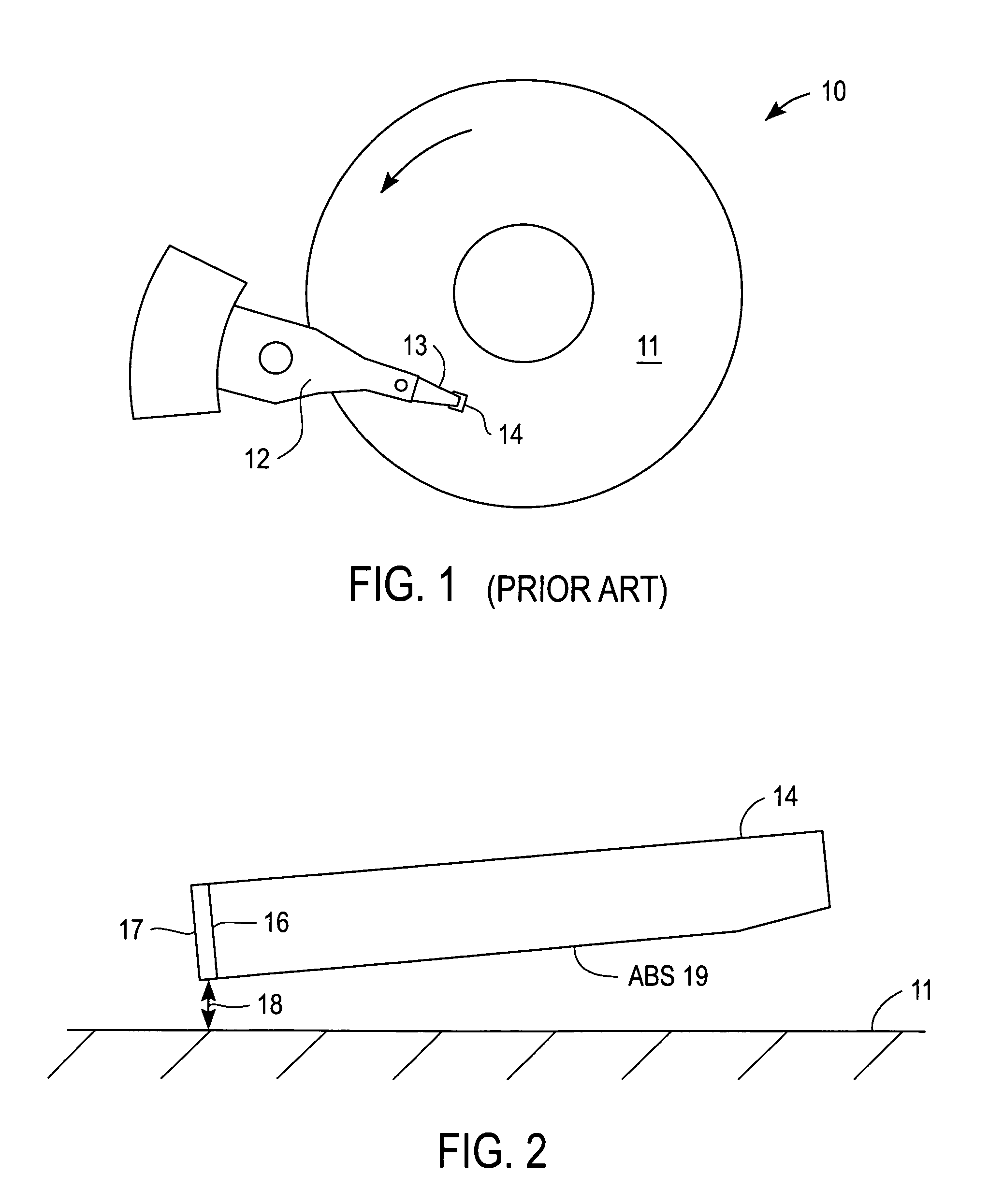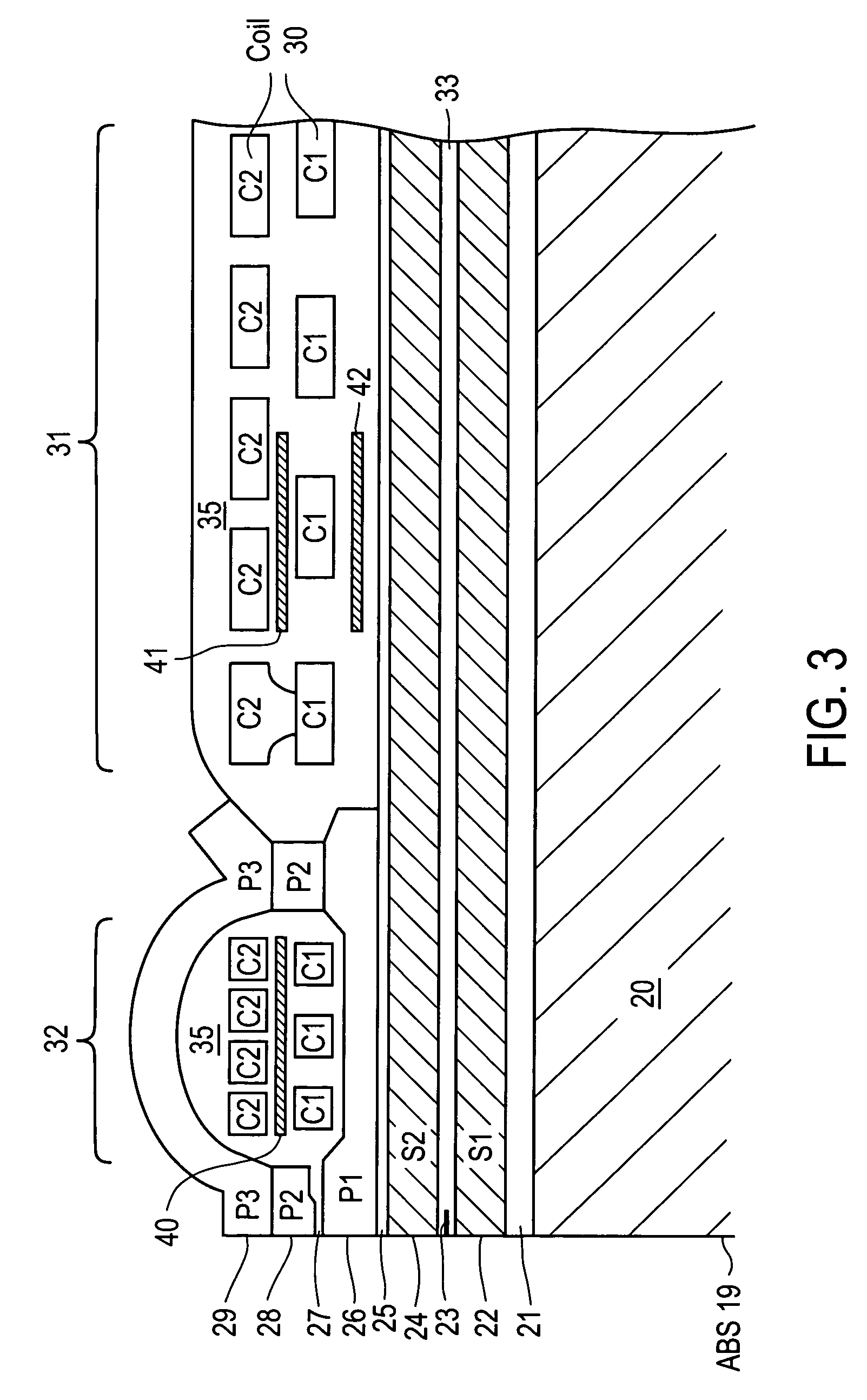Magnetic recording head with resistive heating element and thermal barrier layer
a technology of resistive heating element and magnetic recording head, which is applied in the field of magnetic recording, can solve the problems of deformation of the slider shape, overheating of the magnetoresistive reading element, and excessive thermal stress
- Summary
- Abstract
- Description
- Claims
- Application Information
AI Technical Summary
Problems solved by technology
Method used
Image
Examples
first embodiment
[0042]In accordance with the present invention, at least a portion of a resistive heating element 40 is located between the C1 & C2 coil layers of the first set of turns 32 of coil 30. That is, the C1 & C2 layers of coil 30 are respectively disposed in first and second general planes, and a resistive heating element 40 is disposed in a third general plane between the first and second general planes of coil 30. The first set of turns 32 is disposed nearest to ABS 19, with the second set of turns 31 being disposed farthest from ABS 19. The C1 & C2 layers are embedded within material 35, which material electrically insulates heating element 40 from the turns of coil 30. In the exemplary embodiment of FIG. 4, resistive heating element 40 is shown having a generally annular shape, e.g., like a horseshoe, with the portion illustrated in FIG. 3 being disposed nearest ABS 19, and having first and second arms that extend away from ABS 19.
second embodiment
[0043]In the present invention, a resistive heating element 41 has at least a portion of its constituent material located between the C1 & C2 coil layers of the second set of turns 31 of coil 30. As is shown in the perspective view of FIG. 4, resistive heating element 41 also has the same general annular shape, and is located in the same general plane, as element 40 of the previous embodiment. The primary difference is that element 41 is located farther away from ABS 19. In various implementations, for example, the portion of element 41 shown in FIG. 3 (nearest the air-bearing surface) can be disposed a distance within a range of 20 μm to 60 μm from ABS 19.
third embodiment
[0044]In the present invention, a resistive heating element 42 has the same general shape as heating element 41 and is located within the same distance range from ABS 19 as element 41 of the previous embodiment. The difference between the two embodiments, however, is that resistive heating element 42 is embedded within material 35 between upper shield layer 24 and the C1 layer of the second set of turns 31 of coil 30. Alternatively, heating element 42 may be disposed in nonmagnetic layer 25 below the second set of turns 31 of coil 30. In all other respects, resistive heating element 42 can be the same as element 41 described above.
PUM
 Login to View More
Login to View More Abstract
Description
Claims
Application Information
 Login to View More
Login to View More - R&D
- Intellectual Property
- Life Sciences
- Materials
- Tech Scout
- Unparalleled Data Quality
- Higher Quality Content
- 60% Fewer Hallucinations
Browse by: Latest US Patents, China's latest patents, Technical Efficacy Thesaurus, Application Domain, Technology Topic, Popular Technical Reports.
© 2025 PatSnap. All rights reserved.Legal|Privacy policy|Modern Slavery Act Transparency Statement|Sitemap|About US| Contact US: help@patsnap.com



